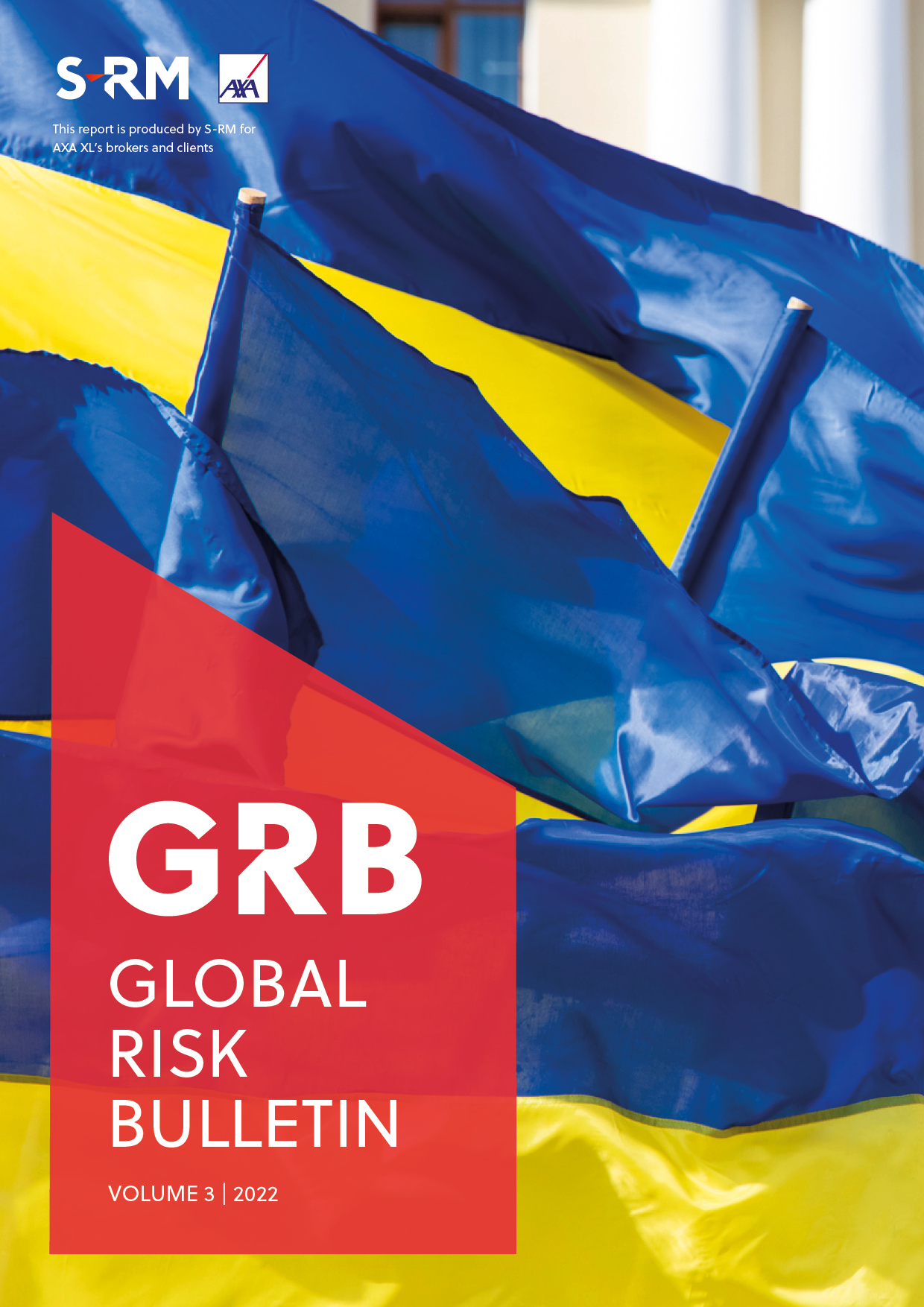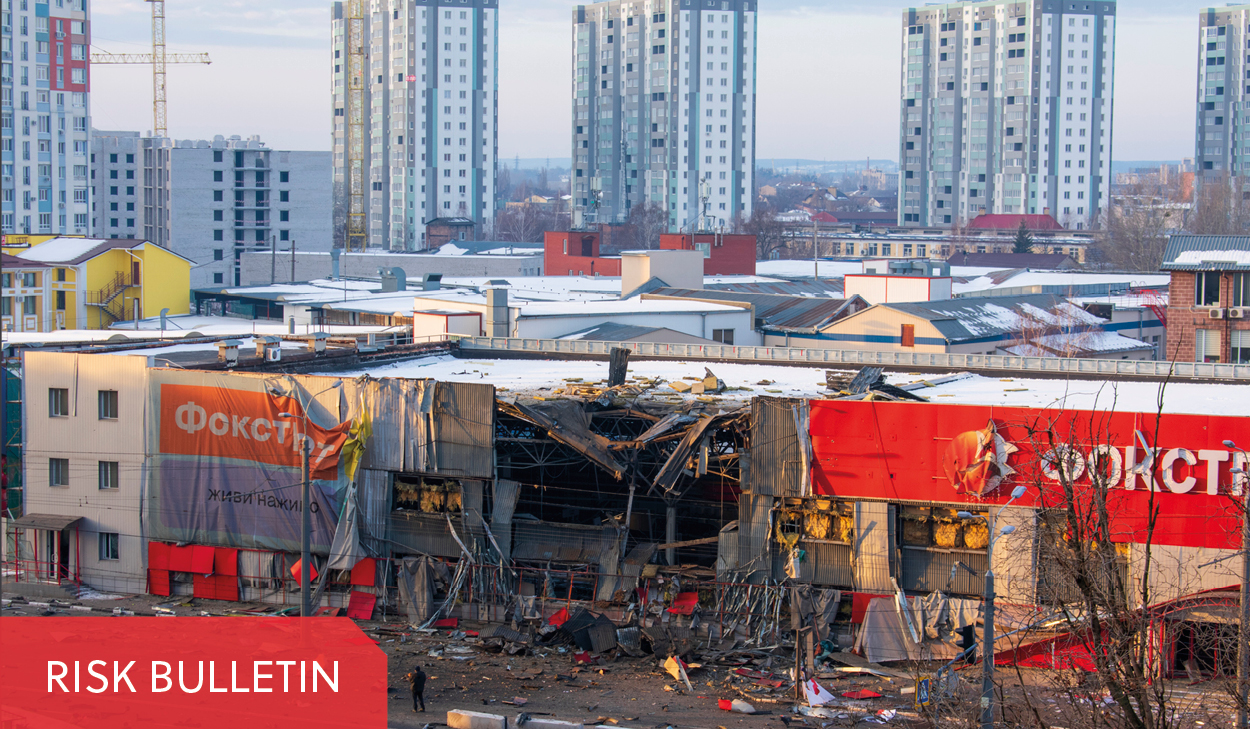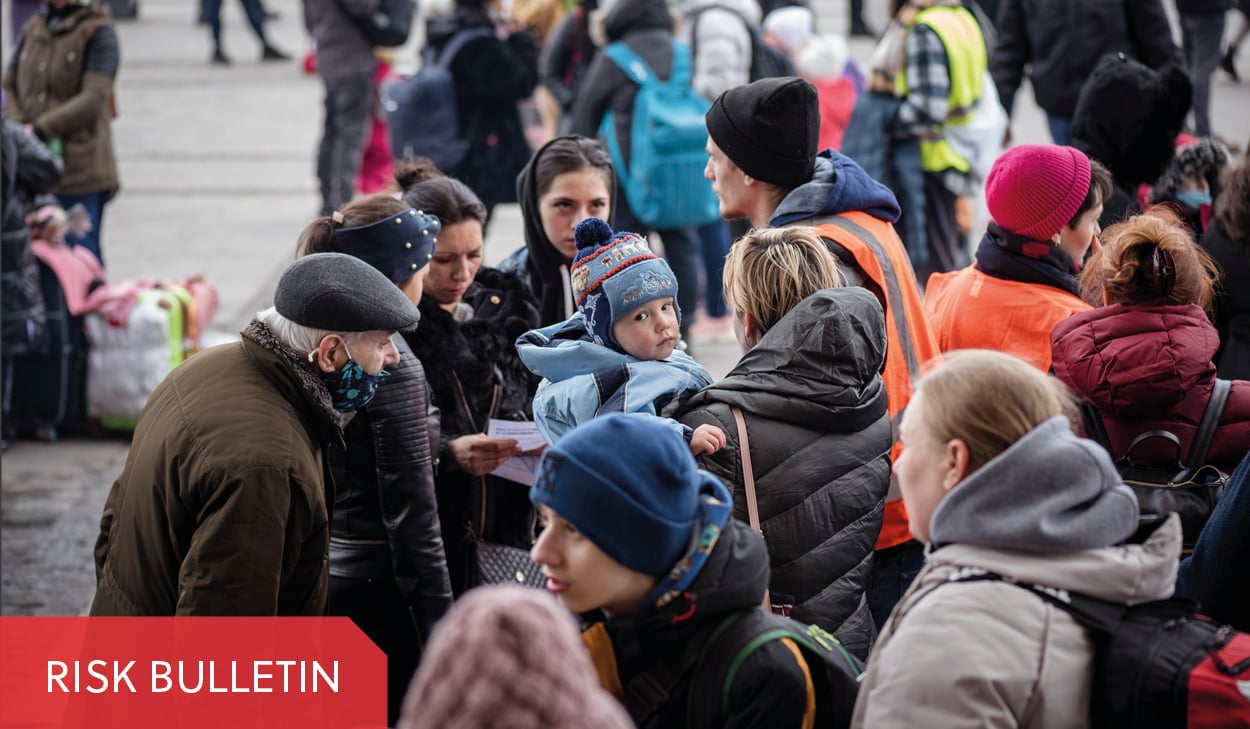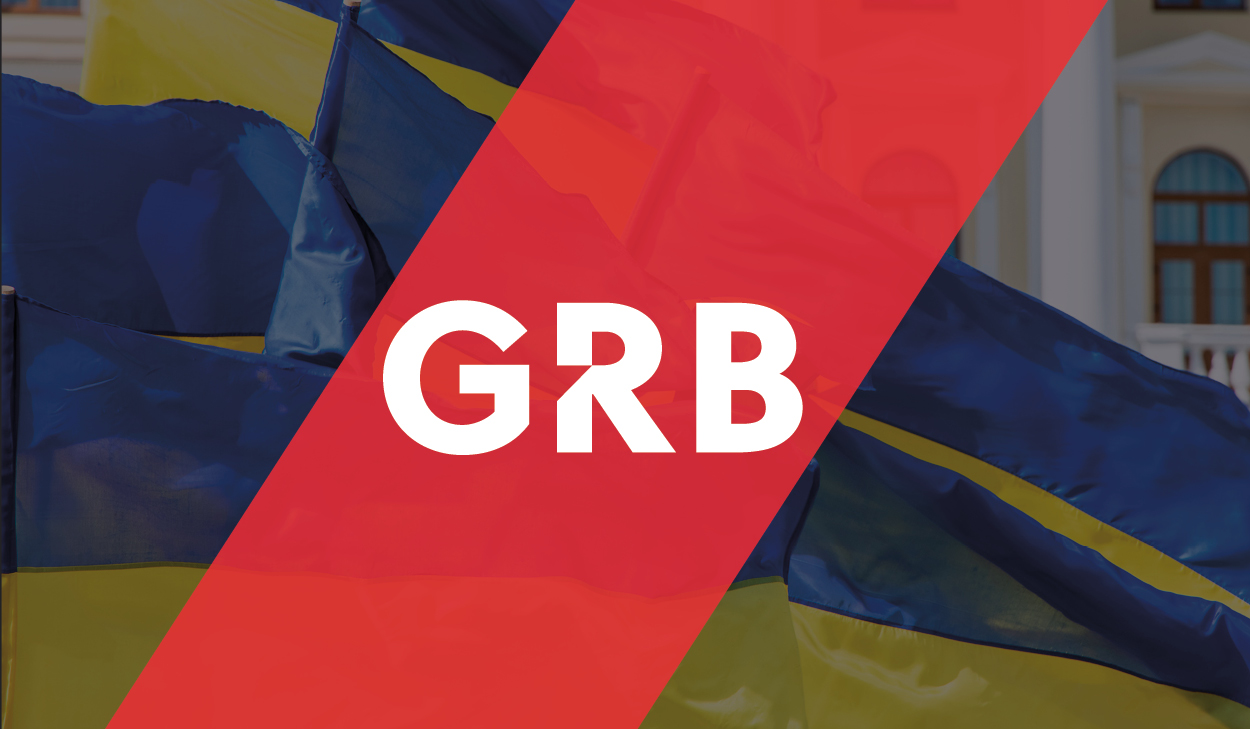Russia’s invasion of Ukraine has taken longer than Russian President Vladimir Putin expected. Amid a prolonged conflict, Gabrielle Reid and Markus Korhonen examine the widespread shocks across various industries likely to have a long-lasting impact on the global economy.
On 24 February 2022, Russian President Vladimir Putin announced a “special military operation” he claimed was aimed at demilitarising Ukraine. However, as Russian troops advanced on Kyiv, it became clear that this was a full-scale invasion. But Russia’s military gains have been slow, with some Russian battalions found to be inadequately trained, unprepared, and demotivated – problems that have been exacerbated by poor military planning. Putin’s hopes of a rapid and effective invasion have been thwarted, prolonging the conflict and giving rise to profound geopolitical, social, and economic challenges. These challenges will impact governments, businesses, and people for years to come
RUSSIAN WAR EFFORT UNDERMINED
Putin’s apparent miscalculation regarding the efficiency with which Russia was expected to carry out the invasion has been underpinned by three key factors. Firstly, despite Putin’s claims that Ukraine lacks “real” statehood, Ukraine’s stiff military resistance and fervent rejection of Russian “liberation” has instead demonstrated a unified Ukraine that is ready to defend itself against Russian aggression.
Russia’s offensive is further impaired by a lack of investment in its ground forces. Russia has invested heavily in a range of weapons upgrades and defence capabilities, particularly cruise and ballistic missile capabilities, air defences and tactical nuclear weapons. But it is also apparent that the capabilities of its infantry – whether in terms of logistical support, equipment maintenance, or operational cohesiveness – are underwhelming. Years of widespread, pervasive corruption have undermined efforts to modernise ground forces, who now also suffer significant material shortcomings and alleged supply shortages on the frontlines. The reported deaths of several high-ranking officers, including at least four generals, signals the alleged disarray of military operations on the battlefield.
"There will be no triumphant return home for Russian troops."
Finally, Putin’s regime appears surprised by the unified Western reaction to the invasion. Instead of a fragmented European Union and a US administration beset by domestic political divisions, Russia’s aggression was met with far-reaching sanctions that have sent the rouble into a tailspin and forced Russia’s central bank to raise its benchmark interest rate from 9.5 to 20 percent in a bid slow runaway inflation. Russian planes have been blocked from European and North American airspace, and several Russian banks have been shut off from the international SWIFT payment system. On the battlefield, the slow advance is resulting in higher-than-expected military casualties and significant destruction of military assets. Russia has lost an estimated 7,000–15,000 soldiers and military equipment worth at least USD five billion.
Global impacts
Russia’s aggression has changed the global political landscape for decades to come, and a network of dependencies and supply webs mean that ripple effects will be felt through the global economy for several years. Key macroeconomic and geopolitical challenges will remain, impacting businesses across the globe.
ENERGY MARKETS
- The conflict has exposed Europe’s reliance on Russian natural gas, a dependency which had increased amid the continent’s broader clean energy transition.
- The need to move away from Russian-supplied gas will require shifts in the energy policies of several European states, as well as increased investment in sourcing alterative gas and (renewable) energy supplies.
- Countries such as Germany are returning to the security that ‘dirty’ fuels like coal offer during this time of crisis. Other Russia-reliant countries are likely to explore similar options as part of efforts to shore up energy supplies, which will have ramifications for global green energy goals.
SHIPPING
- Over 140 commercial vessels remain potentially trapped in the Sea of Azov and the Black Sea due to conflict-related blockades and port closures. At least five commercial vessels experienced explosive attacks.
- Challenges for overland transit through Russia will pressure the already overextended global shipping market, in which supply chain issues exacerbated by the Covid-19 pandemic are driving up freight rates.
- Shipping operators will need to navigate the complexities of sanctions targeting Russian entities, bans on Russian ships and cargo from strategic ports, and crew shortages driven by the fact Ukrainian nationals, who comprise a large portion of global shipping crews, are heading home to join resistance efforts.
- Airfreight is also unlikely to offer an immediate alternative for moving goods through the region, following EU countries’ closure of their airspace to Russian aircraft, reciprocated by Russia.
DISRUPTIONS TO GRAIN SUPPLIES AND FOOD SECURITY CONCERNS
- Together, Russia and Ukraine produce 29 percent of the world’s wheat supply and 19 percent of global corn. Disruptions to supply will have profound effect on the commodity markets.
- Already, Ukraine has banned the export of essential food supplies including wheat, oats, sugar, and live cattle to ensure domestic stocks are not depleted during the war, while Russia has sought to ban grain exports to several countries as part of its pushback against sanctions.
- Possible grain shortages have raised concerns over food security in Africa and the Middle East. Egypt and Libya, for example, import approximately 80 percent of their wheat supplies from Russia and Ukraine. Related protests have been reported in Iraq, Morocco, the Philippines, Sri Lanka, Sudan, and several other countries.
- Meanwhile, the Russian trade ministry called for a suspension of fertiliser exports, directly impacting farmers around the world, increasing concerns on secondary impacts of the conflict on global food supplies.
SUPPLY CHAINS
- Industry, including chemical, metals and manufacturing, will also face global supply chain issues. The automotive industry, for example, is preparing for operational adjustments and delays as the war worsens the global semiconductor shortage, with Ukraine being a key source of semiconductor-grade neon.
FALSE NARRATIVES BREED FALSE HOPESIt seems apparent that, prior to the invasion, Putin’s interpretation of the situation was premised on false narratives and misaligned intelligence assessments, leading to a monumental miscalculation. This has had severe implications for the civilian population in Ukraine, but it will also leave its mark on both the Russian and global economies. The long-term political consequences – for Russia and for Putin – will be significant. The longer the conflict goes on, the more such costs will pile up. Despite an estimated war chest of more than USD 600 billion in foreign reserves, Russian finance minister Anton Siluanov recently admitted that nearly half of this sum was inaccessible after being frozen by sanctions. The Russian military’s failure to make speedier progress means Putin has few good options left – there will be no triumphant return home for Russian troops, and any near-term plans to expand a Russian advance beyond Ukraine are likely to be tempered. As a result, short of forcing Ukraine into submission, either by conventional military or nuclear means, some form of negotiated settlement seems the most likely outcome, although this may well be prefaced by a prolonged conflict. A battered Russian army returning home with little to show for it would be politically disastrous for Putin. While there are no clear outcomes yet, the war will leave behind a trail of destruction and distrust both within and beyond Russia. Meanwhile, although the united response from the West has been welcomed as a sign of strength against aggression, the conflict will leave an equally long-lasting impact on the global order and the various interdependencies that exist therein. |




 Email Gabrielle
Email Gabrielle






 @SRMInform
@SRMInform
 S-RM
S-RM
 hello@s-rminform.com
hello@s-rminform.com

